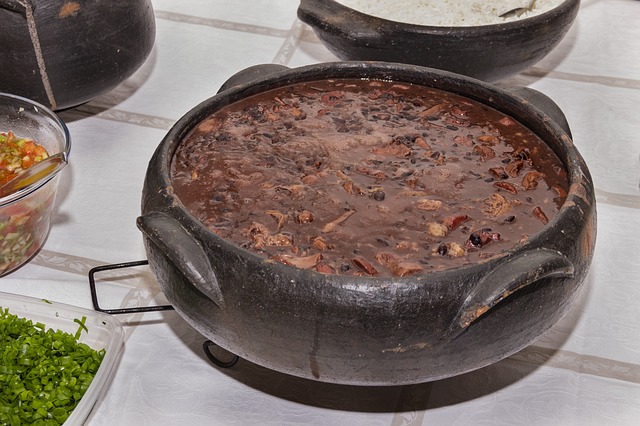Belice tiene la única reserva de jaguares del mundo.

Brazilian gastronomy is very rich and varied. It is influenced by European, African and indigenous cuisine. Among the most common ingredients used in Brazilian recipes are beef, fish, cassava and fruits such as açaí, mango, papaya, guava, orange and pineapple. It is also very common to find dishes with fried ingredients. Today we share with you 3 typical dishes of the country, which are a real treat to the palate.
Feijoada
Feijoada is Brazil's national dish. Along with caipirinha, it has become an icon of the country at international level, a stew prepared with black beans and pork. You can add loin, ribs, tail, and other meats that can be fresh, smoked or dried. It is usually accompanied with rice, oranges, and sprinkled with yucca flour. It can also be found with fried plantains, chopped cabbage, eggs and sausages.
Acarajé
Acarajé is one of the traditional dishes of Bahian cuisine. This dish of African roots originates from the Gulf of Benin and it arrived in Brazil through the slaves brought from that region. It is a bun prepared with a bean dough (fradinho type), onion and salt. It is fried in dendê (palm) oil, which gives it its characteristic orange color. After frying, it is cut in the center and it can be filled with pepper, vatapá, dried shrimp, carurú and salad. Although these last two additions have become a custom since about 30 years ago. This exquisite street dish is sold by the Bahianas of Acarajé, who preserve the tradition of its elaboration. The recipe cannot be modified, so this knowledge is passed from one generation to the next.
They wear long skirts, turbans, cloth and beaded necklaces symbolizing religious initiation. Although they must be dressed in white, on the days of each saint, they may add colors and symbols in reverence to the orishas. The Bahianas of Acarajé constitute historical and affective memory of Bahia. This craft is considered Historical and Immaterial Heritage of the country. This dish is considered a sacred food within the candomblé. The word acarajé comes from the Yoruba language and it means 'to eat a ball of fire'. In its beginnings all the people who produced and commercialized it were initiated in candomblé, generally Daughters of Saint dedicated to the cult of Changó and Oyá.
Nowadays, it is not compulsory for the Bahianas of Acarajé to be practitioners of candomblé, they must only be respectful of the tradition.
Moqueca Capixaba
This exquisite fish stew is typical of the Espírito Santo region. It is prepared with white fish, tomato, onion, coriander and achicote. The name "moqueca" refers to a style of preparing food that consists of cooking without water only with vegetables and seafood. It is prepared in a black clay panela, dyed with red mangrove shell and handmade by the paneleiras of Vitória. Unlike moqueca baiana, capixaba does not contain dendê (palm) oil or coconut milk. El mar

Belice tiene la única reserva de jaguares del mundo.